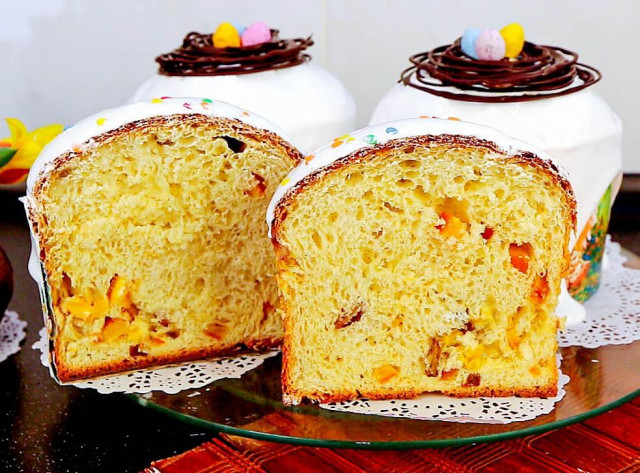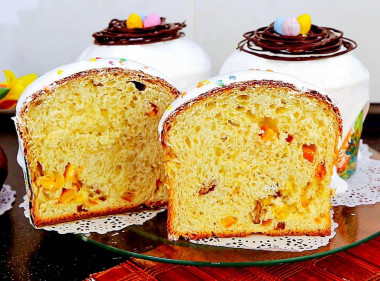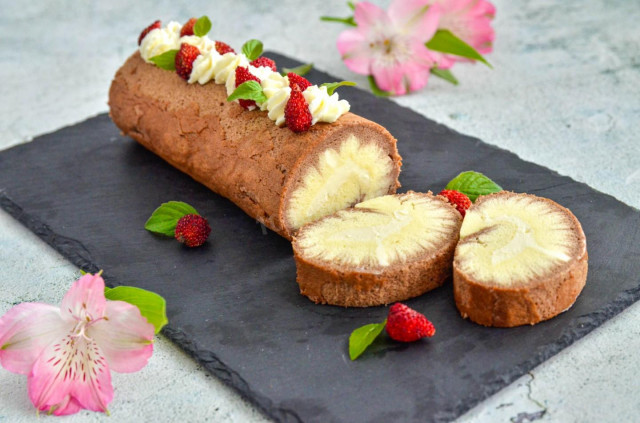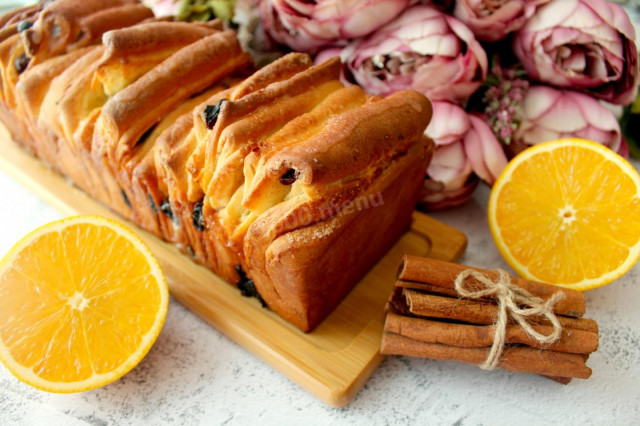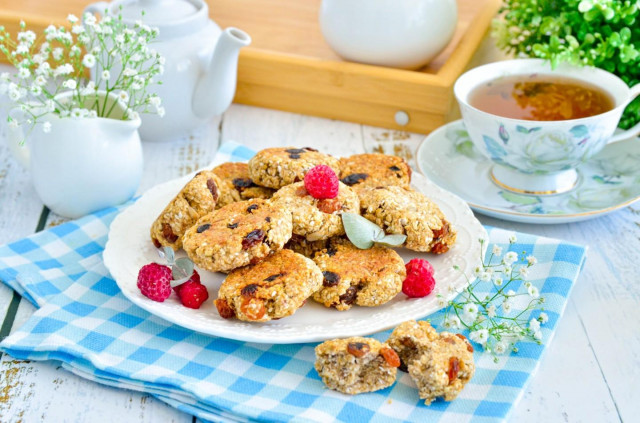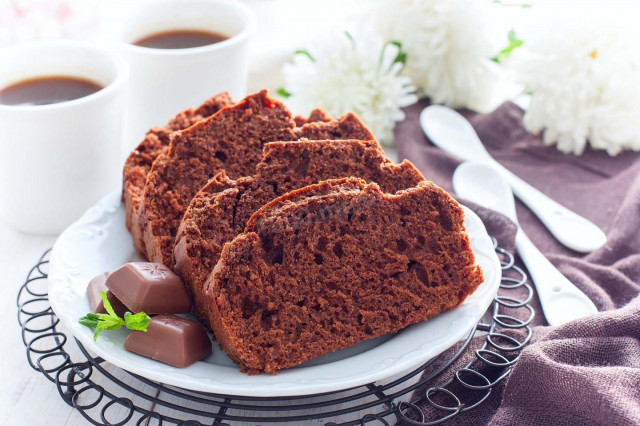Composition / ingredients
Step-by-step cooking
Step 1:

How to bake an Easter cake with cream and dry yeast? To begin, prepare the sourdough. Cream is suitable with a fat content of at least 20%, milk at least 2.5%. Pre-sift the flour.
Step 2:
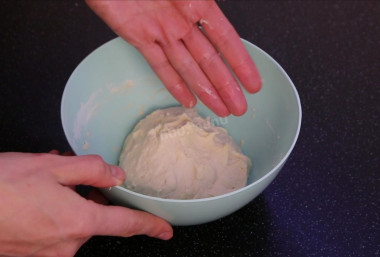
Combine cream and milk together and warm up to a warm state (no more than 38 degrees). Dissolve yeast and sugar in them. Then add flour and knead such a small lump of dough. Slightly sticky, but leaving no traces. Wrap it in plastic wrap and put it in the refrigerator overnight.
Step 3:
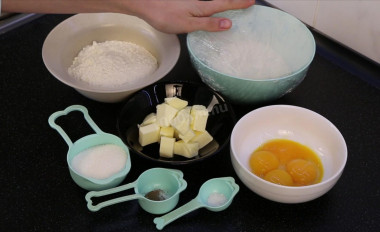
In the morning, continue to prepare the dough. Sift the flour, this will not only remove possible debris, but also saturate it with oxygen, which will make the baking more airy. Butter take 82% fat content, high-quality and natural. In such baking in oil, it is better not to save. The taste of the finished product depends very much on this. The oil should be cold. Take spices as desired. I have cinnamon, nutmeg, cardamom. Mix the yolks with the sugar.
Step 4:

In the bowl of the combine combine the sourdough, egg yolks, ground with sugar, spices, salt and mix everything well until smooth. This is the dough that turns out.
Step 5:
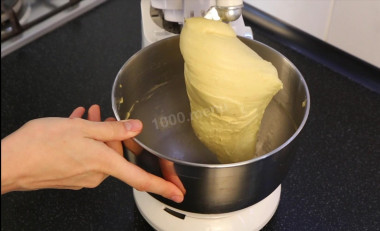
Then add cold butter in small cubes at intervals of 10-15 seconds. This can take about 10 minutes. This is the dough that turns out in the end. Soft and elastic.
Step 6:
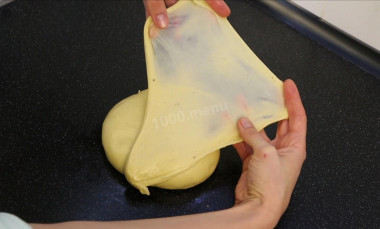
Readiness can be checked for the so-called "gluten window" — when stretched to a transparent state, the dough should not tear. Round the dough, put it in a form greased with vegetable oil, cover with a napkin and leave in a warm place for 2 hours to approach. The dough should double in size.
Step 7:

As a filling, I use candied orange and dried fruits soaked in syrup with alcohol.
Step 8:

Transfer the required amount to a sieve, let the syrup drain.
Step 9:
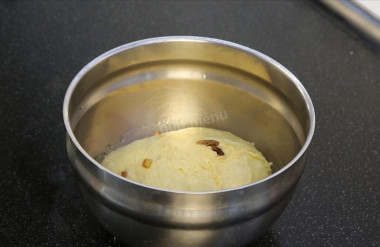
Knead the dough that has come up. Add candied fruits with raisins, knead well. Leave the dough to rest for another hour in the same warm place.
Step 10:
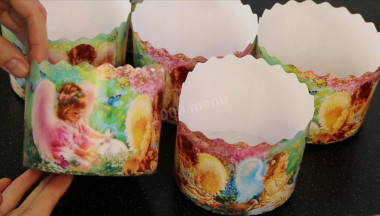
Take paper molds for baking. I have them 9 cm high, 11 cm in diameter.
Step 11:
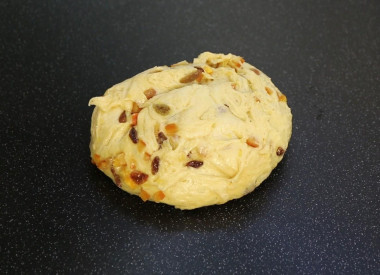
The dough will increase slightly during rest. Divide into 3 equal parts of 305-310gr each.
Step 12:
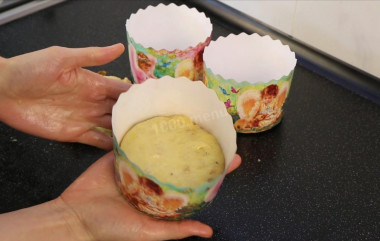
Round each part and fill out the form by a little more than 1/3.
Step 13:

Leave the dough forms to come up in a warm place. It took me a little less than 2.5 hours. The dough should double in size. A lot depends on the temperature in the room. So that the top does not burn and the cap rises well, lightly lubricate it with water or milk.
Step 14:

Bake the cakes at 170-175 degrees until ready. It took me 40 minutes. Check readiness with a wooden stick. Allow the cakes to cool completely on the grill.
Step 15:

Decorate them as desired. I have a protein glaze (or Swiss meringue) of 2 proteins. And then there are such cute, beautiful nests of dark chocolate and M&M's dragees. The cakes are moist, rich, sweet, but not clogged with flour. They smell delicious spices and oranges.
Step 16:
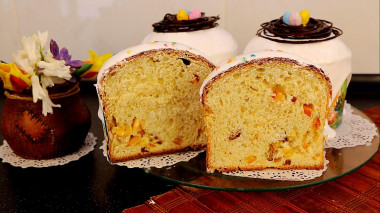
Bon appetit!
The liquid in which yeast is bred should be pleasant to the touch, no higher than 40 degrees. Why is this important? In a warm environment, yeast is well activated, in a hot one it will die, and in a cold one it simply will not work. To avoid unpleasant surprises, check the yeast before mixing with the rest of the ingredients. Pour a little warm milk into a bowl, stir in the yeast. Cover the bowl with a kitchen towel and put it in a warm place without drafts for 10-15 minutes. During this time, a foam yeast cap should appear on the surface of the sponge. If this did not happen, then the fermentation process has not started (the yeast is overdue or spoiled). In this case, it is worth taking other yeast, otherwise baking will not work.
Be prepared for the fact that you may need more or less flour than indicated in the recipe. Focus not on the amount of flour, but on the desired consistency of the dough. Read a lot of useful information about flour and its properties in this article!
Keep in mind that everyone's ovens are different. The temperature and cooking time may differ from those specified in the recipe. To make any baked dish successful, use useful information in this article !
Caloric content of the products possible in the composition of the dish
- Whole cow's milk - 68 kcal/100g
- Milk 3.5% fat content - 64 kcal/100g
- Milk 3.2% fat content - 60 kcal/100g
- Milk 1.5% fat content - 47 kcal/100g
- Concentrated milk 7.5% fat content - 140 kcal/100g
- Milk 2.5% fat content - 54 kcal/100g
- Buttermilk - 36 kcal/100g
- Cream of 20% fat content - 300 kcal/100g
- Cream of 10% fat content - 120 kcal/100g
- Cream - 300 kcal/100g
- Whole durum wheat flour fortified - 333 kcal/100g
- Whole durum wheat flour, universal - 364 kcal/100g
- Flour krupchatka - 348 kcal/100g
- Flour - 325 kcal/100g
- Granulated sugar - 398 kcal/100g
- Sugar - 398 kcal/100g
- Butter 82% - 734 kcal/100g
- Amateur unsalted butter - 709 kcal/100g
- Unsalted peasant butter - 661 kcal/100g
- Peasant salted butter - 652 kcal/100g
- Melted butter - 869 kcal/100g
- Candied fruits - 216 kcal/100g
- Salt - 0 kcal/100g
- Spices dry - 240 kcal/100g
- Egg yolks - 352 kcal/100g
- Dry yeast - 410 kcal/100g
- Dough - 289 kcal/100g

